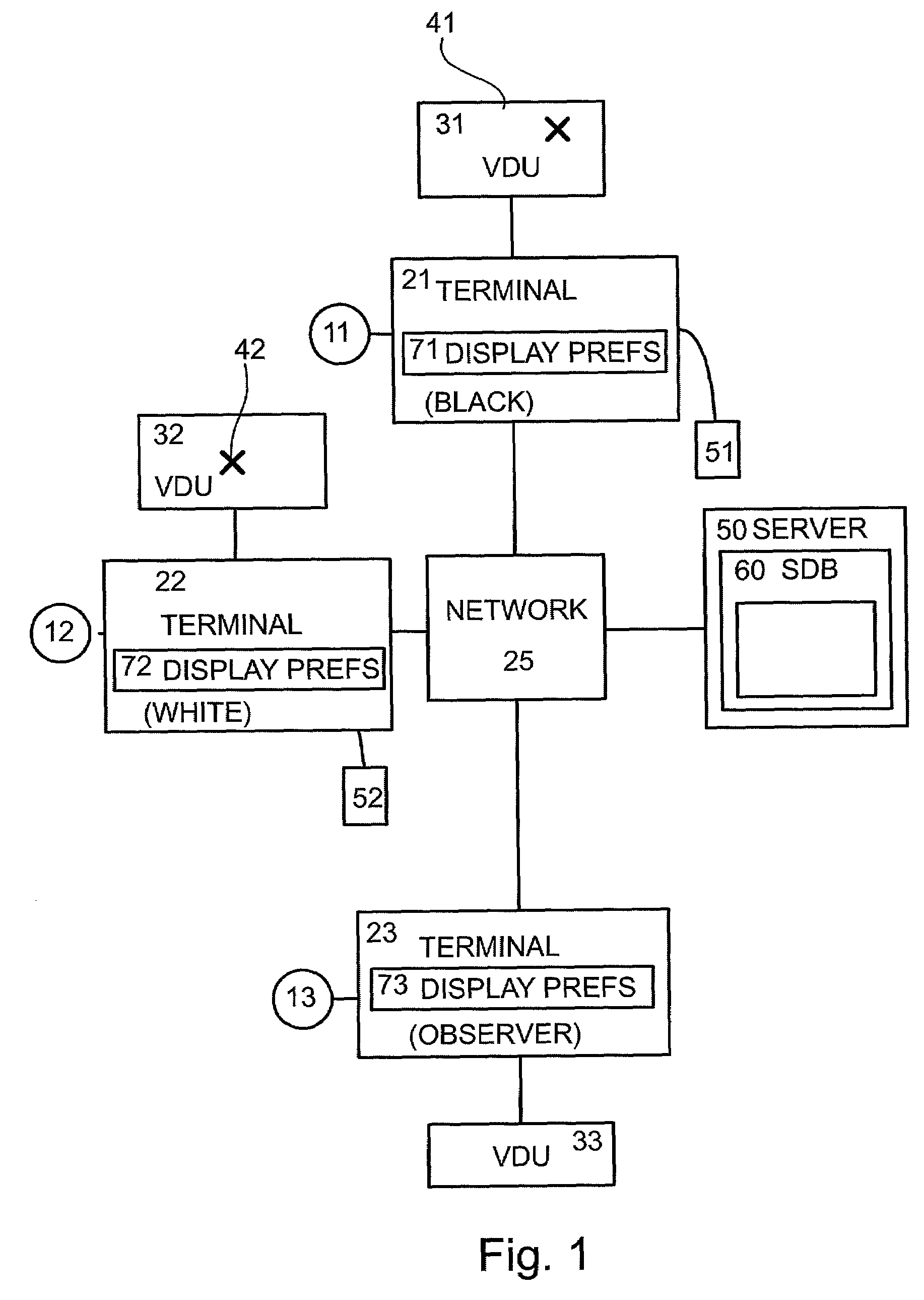Object positioning and display in virtual environments
- Summary
- Abstract
- Description
- Claims
- Application Information
AI Technical Summary
Benefits of technology
Problems solved by technology
Method used
Image
Examples
example
[0199]A preferred embodiment of the present invention comprises a distributed, real time and interactive three-dimensional system, the core of which is a memory resident, real-time, object-oriented database called the SDB (Scene Database). By incorporating the new features of ‘Functional Structuring for Networked Applications’, ‘object Positioning’, ‘Permissioning’, and the ‘Pop-up tool-tip menu’, it is possible to facilitate controlled multi-client interaction with 3D virtual reality applications, with the individual users using standard 2D input devices such as the computer mouse for interacting with the program.
[0200]A prototype of the preferred embodiment was, wherewith the 3D virtual reality was perceived on standard 2D computer monitors, and was also perceived using special immersive equipment. The scene database was implemented in C++ and enables a large number of users to interact with a number of objects therein. The SDB was further developed to allow the creation of new ob...
PUM
 Login to View More
Login to View More Abstract
Description
Claims
Application Information
 Login to View More
Login to View More - R&D
- Intellectual Property
- Life Sciences
- Materials
- Tech Scout
- Unparalleled Data Quality
- Higher Quality Content
- 60% Fewer Hallucinations
Browse by: Latest US Patents, China's latest patents, Technical Efficacy Thesaurus, Application Domain, Technology Topic, Popular Technical Reports.
© 2025 PatSnap. All rights reserved.Legal|Privacy policy|Modern Slavery Act Transparency Statement|Sitemap|About US| Contact US: help@patsnap.com



